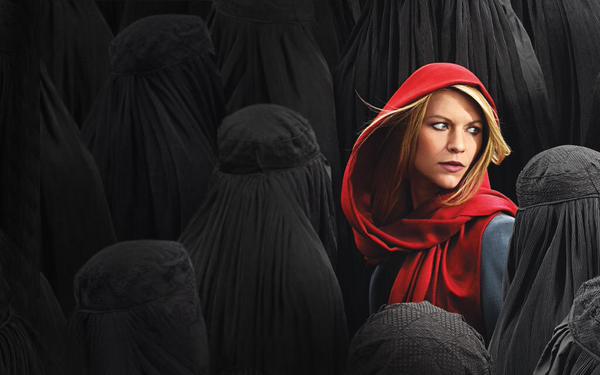
A trio of graffiti artists asked to decorate the set of a Syrian refugee camp for the Showtime’s award-winning television series Homeland took advantage of the opportunity to publicize their dislike of the show’s portrayal of the Muslim world, hiding messages accusing the show of racism in plain sight.
When approached by a friend on behalf of Homeland‘s set production company, Heba Amin, Caram Kapp, and Stone, who are referring to themselves as the “Arabian Street Artists” in mockery of the show’s casting call, were initially hesitant to sign on.
“The series has garnered the reputation of being the most bigoted show on television for its inaccurate, undifferentiated and highly biased depiction of Arabs, Pakistanis, and Afghans” wrote the artists on Amin’s website.
Graffiti on the set of Homeland reading “Homeland is NOT a series” in Arabic.
Photo: Heba Amin, Caram Kapp, and Stone.
This past year, the Washington Post took serious issue with a promotional image of Carrie Matheson, played by Claire Danes, wearing a red headscarf in a crowd of Muslims in head-to-toe black garb, describing it as “a blonde, white Red Riding Hood lost in a forest of faceless Muslim wolves.”
Now, the series, filming in Berlin, was looking to add authentic-looking graffiti to the set. The trio realized they could be a mouthpiece for such discontent. “It was our moment to make our point by subverting the message using the show itself,” said the artists.
Graffiti on the set of Homeland reading “Homeland is racist” in Arabic.
Photo: Heba Amin, Caram Kapp, and Stone.
To that end, the artists decorated the set with Arabic messages critical of the series. A sampling includes “this show does not represent the views of the artists,” “the situation is not to be trusted,” and even “Homeland is racist.”
“Set designers were too frantic to pay any attention to us,” the artists claimed. “In their eyes, Arabic script is merely a supplementary visual that completes the horror-fantasy of the Middle East, a poster image dehumanizing an entire region to human-less figures in black burkas.”
“We wish we’d caught these images before they made it to air,” Homeland showrunner Alex Gansa told Deadline. “However, as Homeland always strives to be subversive in its own right and a stimulus for conversation, we can’t help but admire this act of artistic sabotage.”